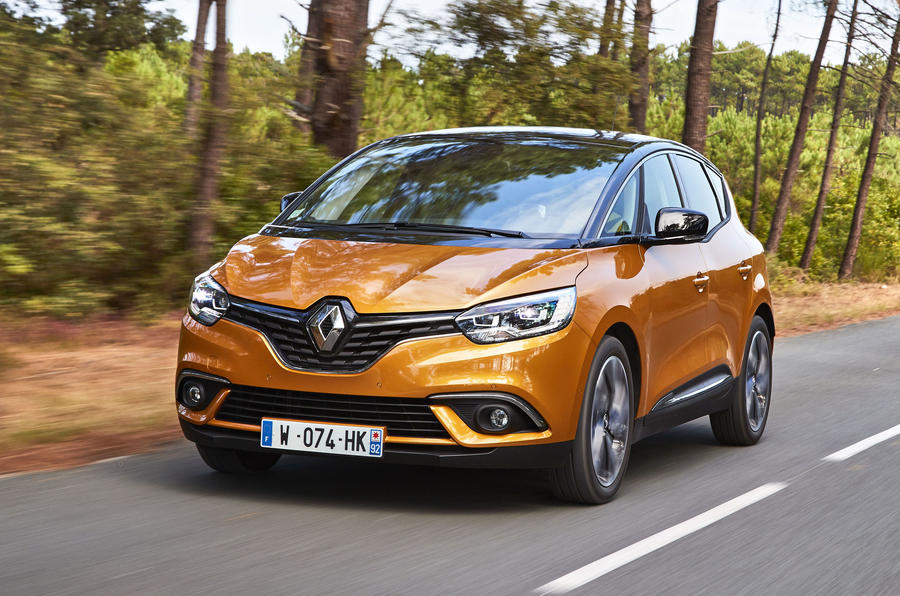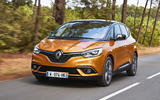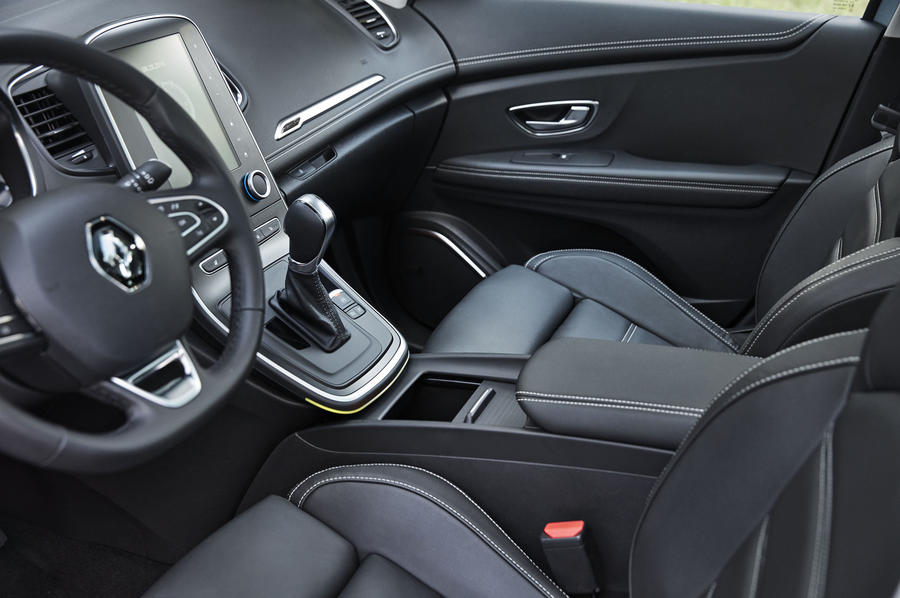What is it?
The MPV has suffered somewhat at the hands of the SUV and crossover. Where once the people carrier seemed your best bet for transporting families and kids and all the paraphernalia that goes with them, buyers have been seduced by the rugged image of the faux by four.
The Renault Scenic hasn’t been able to avoid this shift, despite being an originator of the MPV segment. Indeed, these days you’re much more likely to see a new Renault Kadjar instead. With that in mind, Renault has been rather bold with this, its fourth-generation Scenic.
Elements of SUV have crept into the design: there’s a 40mm increase in ground clearance, more muscle to the bodywork and a shift to big 20in wheels. Interestingly, that’s not just for glitzy models either, because even entry-level Expression + models are rollin’ on 20s, as they say.
While you might expect that to mean ride comfort only marginally better than that of a shopping trolley being pushed over corrugated iron, the tyres have a taller profile than those fitted to the majority of smaller-wheeled competitors. They’re relatively narrow too, helping keep costs down and CO2 emissions in check.
Importantly it’s also more spacious inside and comes with a bigger boot and plenty of kit to help keep your nearest and dearest safe. It all looks very impressive on paper, but is it enough to tempt people out of their SUV and back into an MPV?
What's it like?
First impressions are good. The Scenic and larger Renault Grand Scenic are both attractive things in the metal and much more imposing than their rivals. There may be hints of SUV about the raised ride height, but the heavily raked screen still screams 'people carrier'.
Getting behind the wheel, the tech-laden interior of our high-spec test car was immediately apparent. Analogue dials have been banished and replaced with TFT displays for speed, engine temperature and fuel level. Scrolling through the five drive modes changes the centre display and the priority of the information displayed. It looks attractive enough but can’t show the variety of information that Volkswagen’s Active Info Display does.
Dynamique S Nav and top Signature Nav trims receive a colour head-up display to project speed, navigation information and other data. It looks good at a standstill but jiggles slightly on the move. It also seems an awful long way down the expansive dashboard.
The top two trims also get R-Link 2, Renault’s 8.7in portrait-orientated infotainment system. You certainly get plenty of functionality, including the ability to fold the rear seats down at the touch of a button. Unfortunately, the menus can be confusing to navigate and slow to respond – switching songs on a Bluetooth device, for example, takes a painfully long time.
The cabin is undoubtedly practical, however. The generous glovebox pops open like a filing cabinet, while between the seats is a cavernous centre console that can be slid backwards and forwards depending on your passengers' needs. Quality is also pretty good; there are cheaper materials but they’re largely in areas you won’t touch that much.
There’s a pair of USB ports and a 12V socket in the cubby under the front armrest, plus the same again on the rear of the unit for those in the back. It’s handy, but sliding the unit to where it works best as an armrest also hides the cupholders for front seat passengers.


































Join the debate
Add your comment
Turning to stupidity
Its a good idea aesthetic wise
I imagine those types will be